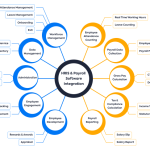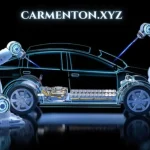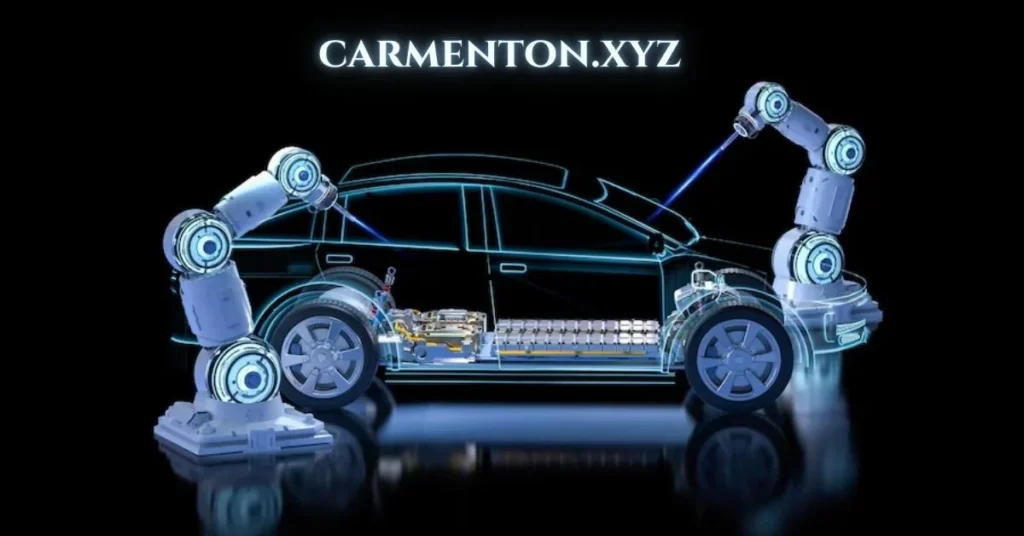Quantum computing has long been a promising field, holding the potential to revolutionize computation by harnessing the strange and powerful properties of quantum mechanics. One of the most exciting developments in this domain is the discovery and application of “Lepbound.” This concept is emerging as a critical factor in understanding the limitations and possibilities of quantum circuits, influencing everything from error correction to computational capacity.
Quantum circuits, at their core, are fundamental to quantum computing. They process qubits—quantum bits that can represent multiple states simultaneously through superposition and entanglement—leading to exponential increases in computational power over classical bits. However, with these advances come unique challenges. One such challenge is encapsulated in the concept of Lepbound, which imposes constraints on quantum operations and error rates.
Lepbound is not just a theoretical curiosity; it has real-world applications and implications for the future of quantum computing. This article dives deep into the meaning of Lepbound, its place in the quantum landscape, and how it may shape the future of technology.
What Is Lepbound in Quantum Computing?
Lepbound, in the context of quantum computing, refers to a theoretical limit on the efficiency and performance of quantum circuits. While qubits offer unprecedented computational power, their operation is constrained by factors such as noise, coherence times, and error rates. Lepbound specifically deals with these constraints, outlining the boundaries within which quantum circuits can function optimally without encountering catastrophic errors.
Quantum circuits consist of gates that manipulate qubits, similar to logic gates in classical computing. However, unlike classical gates, quantum gates must preserve quantum coherence and minimize error—a task that becomes increasingly difficult as the number of qubits increases. Lepbound helps to quantify the trade-offs between increasing qubit numbers and the feasibility of maintaining error correction at manageable levels.
At its core, Lepbound is about understanding the balance between the power of quantum computations and the limitations imposed by physical reality. It represents the point beyond which adding more qubits or complexity does not yield a proportional increase in computational power, due to errors overwhelming the system.
The Importance of Lepbound in Quantum Error Correction
One of the most critical applications of the Lepbound concept is in quantum error correction. Quantum systems are notoriously fragile, with qubits prone to errors from environmental interference, decoherence, and other quantum noise sources. These errors must be corrected in real time to ensure accurate computation.
Lepbound plays a pivotal role in determining how effective quantum error correction techniques can be. It helps researchers identify the thresholds beyond which error correction becomes impractical. For instance, if the number of qubits exceeds the Lepbound limit, the noise and errors introduced by additional qubits could render the entire system unusable, no matter how advanced the error correction algorithms are.
This has significant implications for scaling quantum computers. As companies like IBM, Google, and others race to build more powerful quantum machines, understanding Lepbound can prevent wasted effort on designs that are theoretically impressive but practically unworkable due to error rates.
Lepbound and Quantum Supremacy
Quantum supremacy refers to the point at which a quantum computer can solve problems that are practically unsolvable by classical computers within any reasonable timeframe. Lepbound directly influences the race toward quantum supremacy because it sets a limit on how far we can push quantum circuits before errors start to dominate.
While some quantum machines have demonstrated limited forms of supremacy in specific tasks, Lepbound suggests that there are hard limits to what can be achieved without breakthroughs in error correction. Researchers working to achieve quantum supremacy must navigate the challenges posed by Lepbound, finding ways to optimize quantum gates, circuits, and qubit coherence while avoiding error escalation.
Thus, Lepbound represents both a challenge and an opportunity in the quest for quantum supremacy. By acknowledging these limits, researchers can refine their approaches, focusing on designs and architectures that stay within manageable error boundaries.
How Lepbound Shapes the Future of Quantum Computing
The implications of Lepbound for the future of quantum computing are vast. By understanding the limitations imposed by this concept, researchers can better plan the architecture of future quantum computers, ensuring they are designed to operate within feasible error rates. Additionally, Lepbound may inspire new techniques for reducing quantum noise or improving qubit coherence times, helping to extend the boundaries it imposes.
Beyond error correction, Lepbound could also influence quantum algorithms and programming languages. Developers will need to optimize quantum programs to work efficiently within these constraints, which may lead to new ways of thinking about quantum problem-solving.
Moreover, the business and investment communities following the quantum computing revolution must consider Lepbound when making decisions about which technologies or companies to support. Technologies that push beyond Lepbound without addressing its challenges may struggle, while those that find innovative ways to operate within these limits will be better positioned for success.
Quantum Technologies and the Role of Lepbound
Quantum computing is not just about increasing the number of qubits—it is about ensuring that those qubits can work together efficiently to solve complex problems. Lepbound helps define the point at which adding more qubits stops being helpful, allowing companies and researchers to focus on improving coherence and error correction instead of merely increasing scale.
As quantum technologies advance, Lepbound will likely be a key factor in determining their success. For example, quantum communication networks, which rely on entanglement to transmit information across distances, will also need to account for the limits of Lepbound. Similarly, quantum sensors and quantum encryption systems must be designed with Lepbound in mind to ensure they operate within feasible error thresholds.
Impacts of Lepbound on Quantum Circuit Design
Designing quantum circuits requires a delicate balance between complexity, coherence, and error correction. Lepbound represents the threshold beyond which circuit complexity leads to diminishing returns due to excessive errors.
To navigate this, quantum engineers need to focus on optimizing the efficiency of each qubit and gate, rather than merely scaling up the number of components. By understanding and working within the constraints of Lepbound, they can design circuits that achieve maximal performance with minimal error.
Quantum circuit design that adheres to the principles of Lepbound will also be more energy-efficient, as fewer resources will be wasted on error correction and recalibration. This has the added benefit of making quantum computers more sustainable in the long run, an essential consideration as the technology becomes more widespread.
Challenges in Overcoming Lepbound
While Lepbound presents a significant challenge, it is not necessarily an insurmountable one. Researchers are constantly developing new techniques for error correction, quantum coherence, and qubit stabilization that may one day extend the limits imposed by Lepbound.
For example, advancements in topological qubits—qubits that are more stable and less prone to error—could push the boundaries of Lepbound further, allowing for larger and more complex quantum systems. Similarly, improvements in quantum gate design, error detection algorithms, and quantum hardware could help reduce the impact of Lepbound on future quantum computers.
However, these advancements will require significant time, effort, and investment. The road to overcoming Lepbound will be long, but the potential rewards—quantum computers capable of solving some of the world’s most complex problems—make the journey worthwhile.
Lepbound in Quantum Cryptography
Lepbound also has implications for quantum cryptography, a field that relies on the security of quantum mechanics to create unbreakable encryption methods. Quantum cryptographic systems need to operate within the limits of Lepbound to ensure that their qubits remain coherent and error-free during the encryption process.
If the limits imposed by Lepbound are not respected, quantum cryptographic systems could become vulnerable to errors, potentially compromising the security they are designed to ensure. As quantum cryptography becomes more mainstream, understanding and applying Lepbound will be critical for ensuring the integrity of these systems.
Conclusion
Lepbound represents a critical limit in the world of quantum computing, defining the boundaries within which quantum circuits can operate effectively. By understanding and working within these limits, researchers, engineers, and developers can optimize quantum computers for real-world applications, from error correction to cryptography.
The journey to fully harnessing the power of quantum computing will require overcoming the challenges posed by Lepbound. However, with ongoing research and development, the future of quantum technology looks brighter than ever, with the potential to revolutionize industries ranging from healthcare to finance, all while operating within the bounds set by Lepbound.
FAQs
What is Lepbound in quantum computing?
Lepbound refers to a theoretical limit on the performance and efficiency of quantum circuits, particularly concerning error rates and qubit coherence.
How does Lepbound affect quantum error correction?
Lepbound helps define the point at which quantum error correction becomes impractical due to excessive errors, guiding researchers in optimizing quantum circuits.
Can quantum computers overcome the limitations of Lepbound?
While Lepbound presents challenges, advancements in qubit stability, quantum gates, and error correction may one day push these limits further.
Is Lepbound related to quantum supremacy?
Yes, Lepbound influences the race toward quantum supremacy by setting limits on the number of qubits and the complexity of circuits that can function effectively.
Why is Lepbound important for quantum cryptography?
Lepbound ensures that quantum cryptographic systems maintain error-free qubits, preserving the security and integrity of encrypted data.
What role does Lepbound play in quantum circuit design?
Lepbound defines the point at which increasing the complexity of quantum circuits leads to diminishing returns due to error escalation, guiding optimal design strategies.











